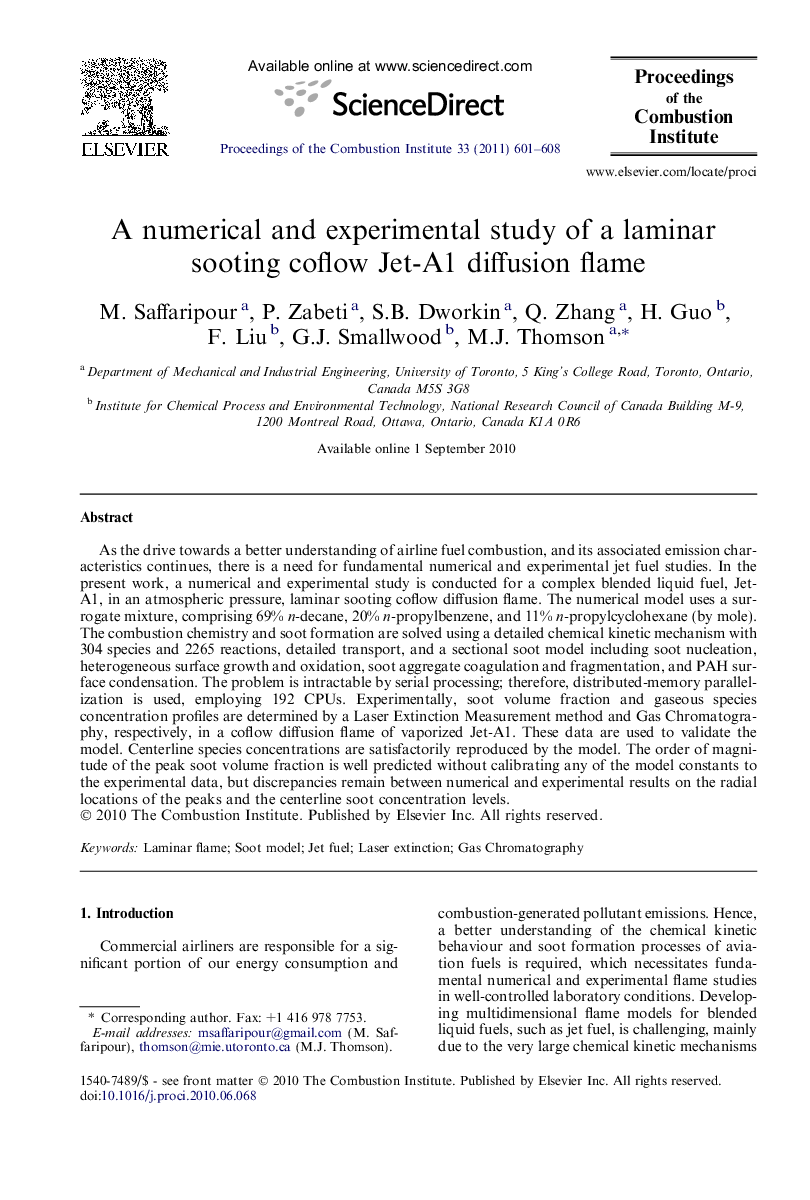| Article ID | Journal | Published Year | Pages | File Type |
|---|---|---|---|---|
| 241368 | Proceedings of the Combustion Institute | 2011 | 8 Pages |
As the drive towards a better understanding of airline fuel combustion, and its associated emission characteristics continues, there is a need for fundamental numerical and experimental jet fuel studies. In the present work, a numerical and experimental study is conducted for a complex blended liquid fuel, Jet-A1, in an atmospheric pressure, laminar sooting coflow diffusion flame. The numerical model uses a surrogate mixture, comprising 69% n-decane, 20% n-propylbenzene, and 11% n-propylcyclohexane (by mole). The combustion chemistry and soot formation are solved using a detailed chemical kinetic mechanism with 304 species and 2265 reactions, detailed transport, and a sectional soot model including soot nucleation, heterogeneous surface growth and oxidation, soot aggregate coagulation and fragmentation, and PAH surface condensation. The problem is intractable by serial processing; therefore, distributed-memory parallelization is used, employing 192 CPUs. Experimentally, soot volume fraction and gaseous species concentration profiles are determined by a Laser Extinction Measurement method and Gas Chromatography, respectively, in a coflow diffusion flame of vaporized Jet-A1. These data are used to validate the model. Centerline species concentrations are satisfactorily reproduced by the model. The order of magnitude of the peak soot volume fraction is well predicted without calibrating any of the model constants to the experimental data, but discrepancies remain between numerical and experimental results on the radial locations of the peaks and the centerline soot concentration levels.
